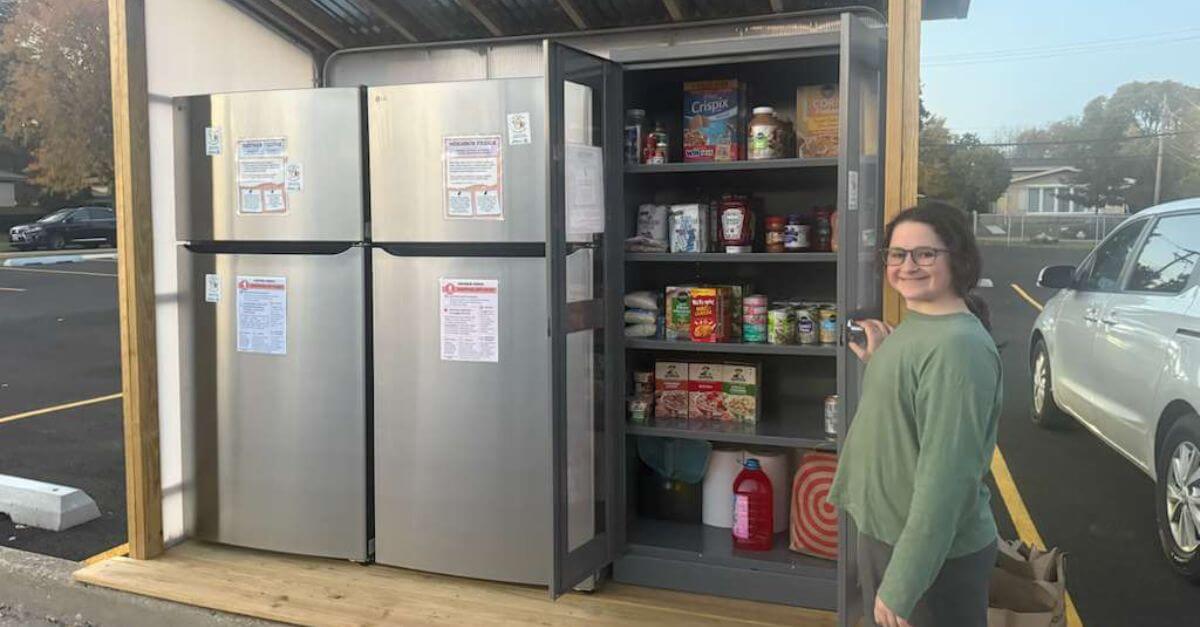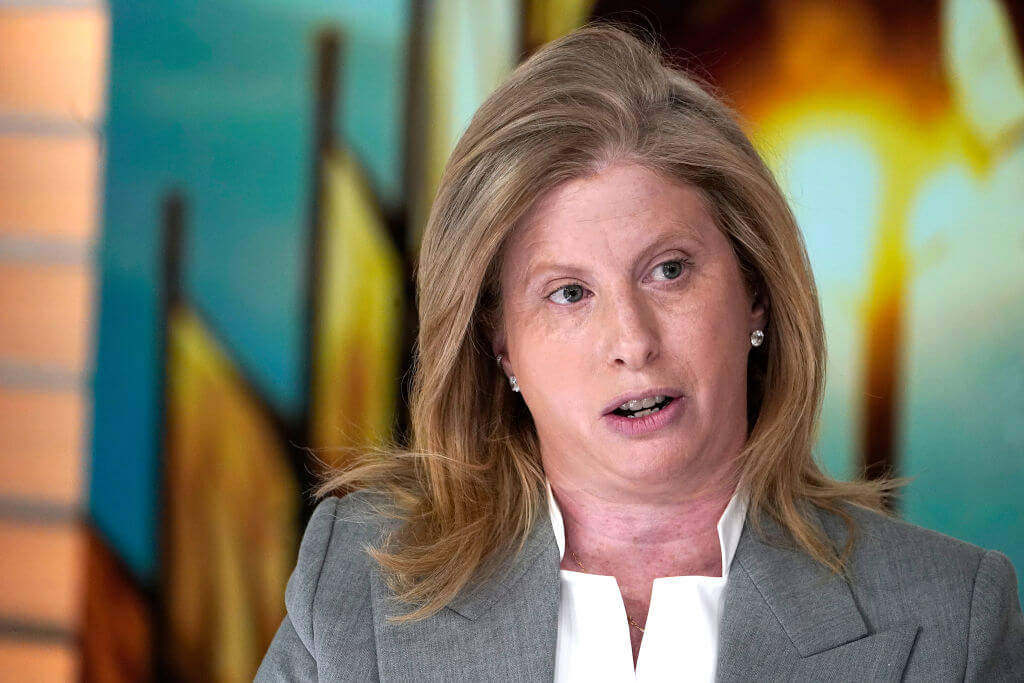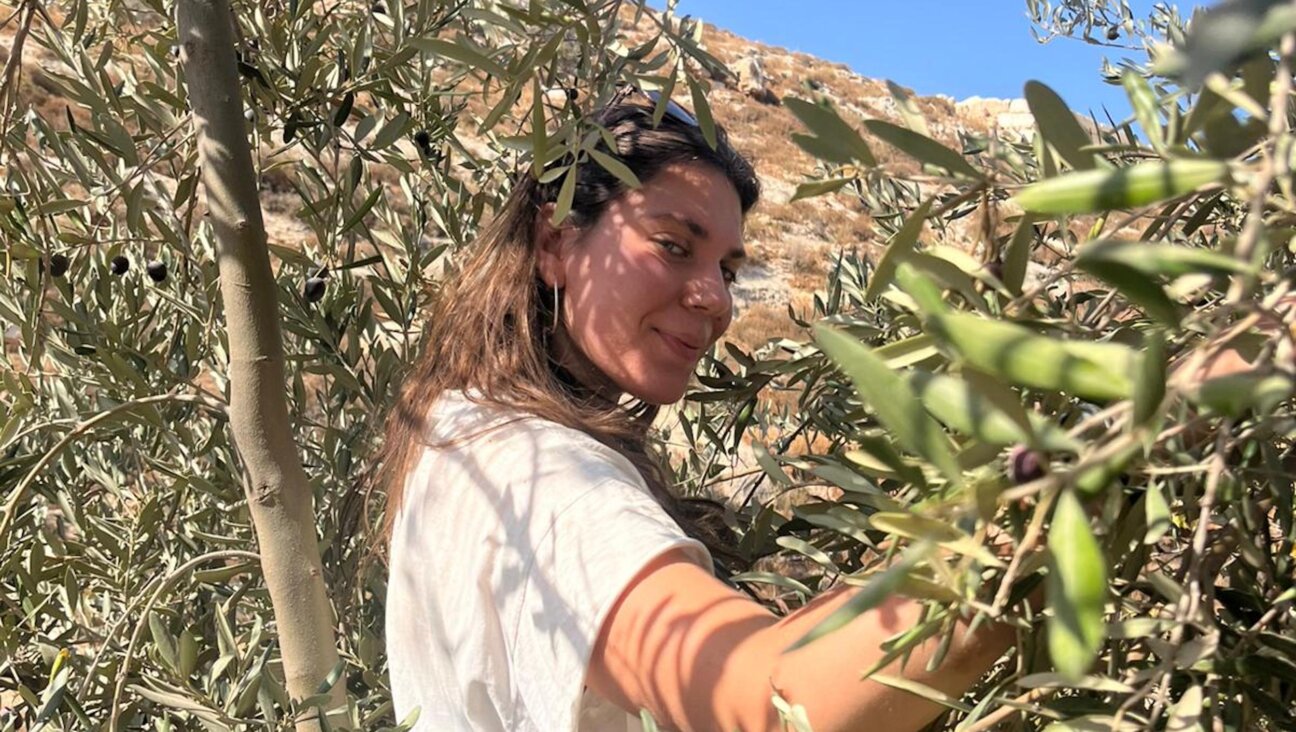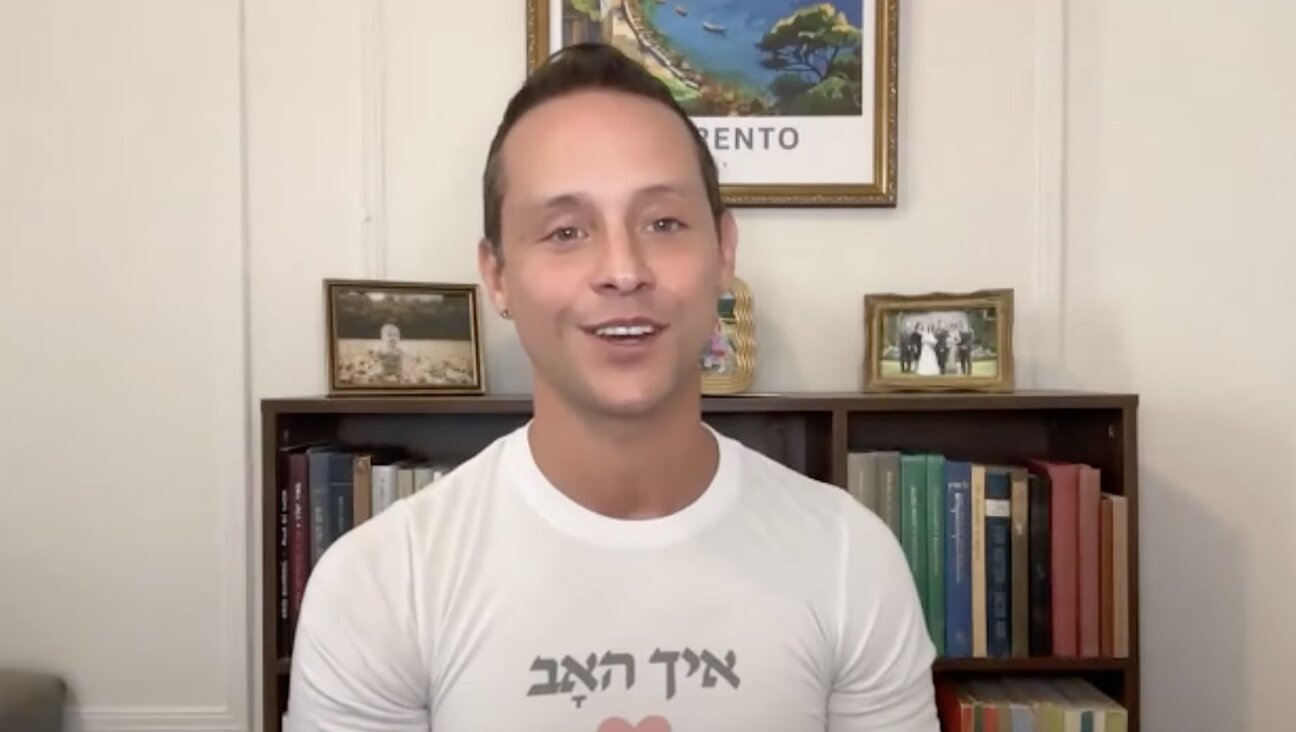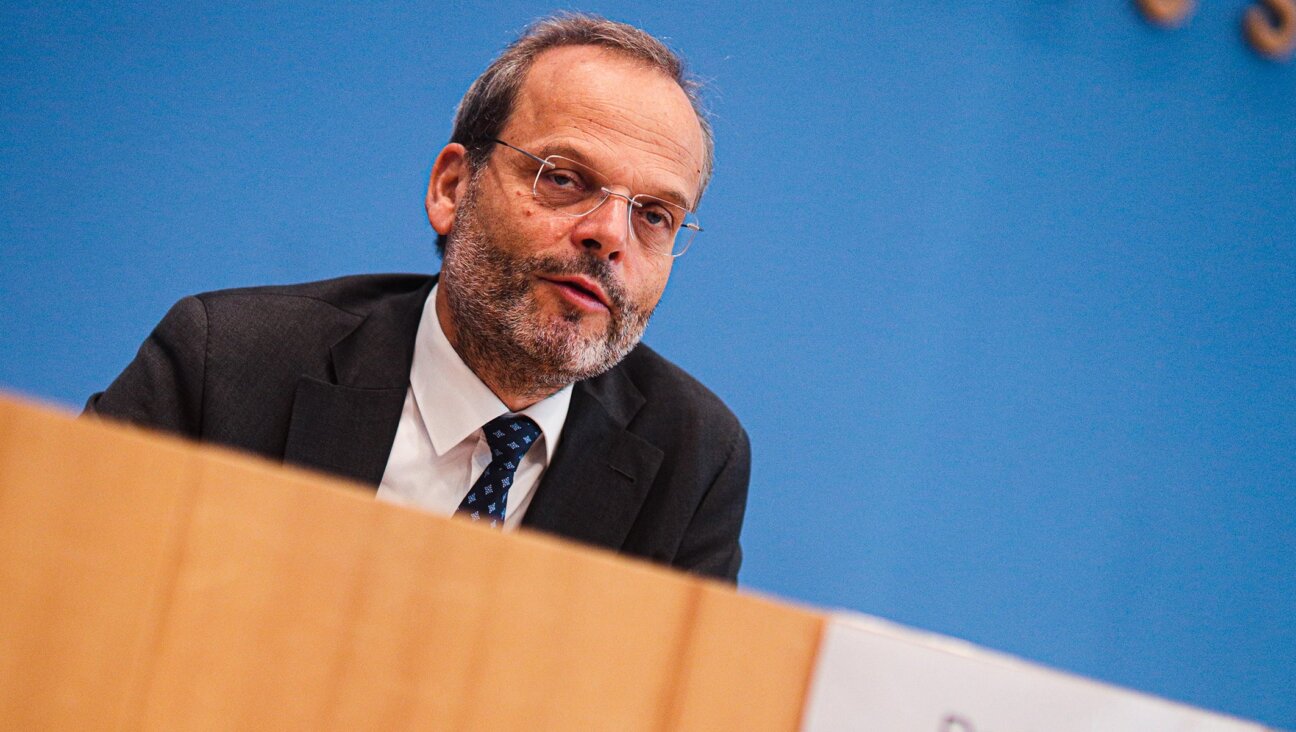‘Two-State Solution’ Faces a Patchwork of Challenges

Graphic by Angelie Zaslavsky
As the Obama administration struggles to restart negotiations between Israel and the Palestinians, a two-state solution remains the final goal, supported by governments in Jerusalem, Ramallah, Washington and Moscow. It enjoys at least lip service from everyone from Benjamin Netanyahu on the right to Noam Chomsky on the left.
It is a term that has become as much mantra as policy.
But is a two-state solution still viable? The question is one that no government has had to grapple with since President Clinton tried, but failed, to bring together Israelis and Palestinians around the concept in 2000. Beginning today, the Forward will examine the new, largely unacknowledged challenges a two-state solution faces and explore whether and how those challenges can be addressed. Over the course of the next few months, the Forward will invite opinion makers, policymakers, writers, artists and other thought leaders to share their ideas of how to imagine two states for two peoples.
Much has changed since Clinton’s attempt. The Palestinian Authority, Israel’s negotiating partner, has splintered into its two rival factions: one ruling the West Bank and still seeking a two-state solution; the other, Hamas, in control of Gaza and adamantly rejecting it. This division has prompted serious concerns about whether Palestinian leaders are able to come to an agreement that can be implemented and is legitimate in the eyes of its people.
West Bank Jewish settlements, meanwhile, have continued to grow, making the prospects for a Palestinian state with geographic coherence and contiguity more complicated. So, too, have grown the logistical, political, military and financial challenges Israel would face in evacuating a significant number of settlers, as would be required in any likely outcome of a negotiated two-state settlement.
At the same time, public support among Palestinians for the concept of “two states for two peoples” is losing ground to rival approaches, such as a one-state solution that would encompass Jews and Palestinians, or, more subtly, a division of the land into two states, one for Palestinians, the other effectively binational. Among Israelis, public support for a two-state solution has grown, solidified by Netanyahu’s declaration of support, even though some Israelis acknowledge that its prospects are fading.
Roll over the map with your mouse, for more information about the settlements:
This series will examine each of these challenges, and some of the new ideas now percolating beneath the surface. But to begin to grasp the scope of the wrenching changes that a two-state solution would require, consider the case of Ma’ale Adumim.
A bustling city of 34,600 people, many of them living in spacious American-style houses, Ma’ale Adumim is a far cry from the caravans-on-a-hilltop image many have of a settlement. To its residents, Ma’ale Adumim is a convenient and affordable commuter base to Jerusalem. It is common for them, when discussing the news, to speak of “the settlers” — and balk if that title is applied to them. When a rally was held just outside the city last autumn to oppose a settlement freeze, only a few hundred people showed up, and most were not locals.
It’s hard to imagine a more inoffensive slice of suburbia. Ma’ale Adumim is often called a “consensus settlement,” one that no Israeli government would agree to dismantle. Just 4.5 miles from Jerusalem, it is nearly part of the capital’s metro area.
A location so close to Jerusalem would appear to make Ma’ale Adumim noncontentious. But in fact, critics say that it seems to be transforming East Jerusalem into an Arab island surrounded on all sides by Jewish neighborhoods and increasingly cut off from the West Bank.
“Put simply, Ma’ale Adumim is the trump card in the pack in Israel’s efforts to encircle occupied East Jerusalem and bifurcate the West Bank,” Saeb Erekat, head of the Palestine Liberation Organization’s negotiations affairs department, told the Forward. His claim is based on the fact that the municipal boundaries of the so-called Adumim settlements (Ma’ale Adumim and neighboring settlements) extend in a northeasterly direction far beyond the built-up areas and connecting to the jurisdiction of other settlements, meaning that there is a trajectory of Israeli-controlled land virtually all the way to Jericho. It is the prospect of such an extension of land being filled in with developments that adds fuel to the Palestinians’ adamant rejection of Israel’s insistence on “natural growth.”
Roll over the map with your mouse, for more information about the settlements:
Hagit Ofran, who heads a program monitoring settlements at the Israeli activist group Peace Now, told the Forward that with Ma’ale Adumim straddling the two major areas of discussion, East Jerusalem and the West Bank, and threatening to create a geographical barrier between them, she considers this Jewish settlement “the biggest problem” for the two-state solution.
Ma’ale Adumim’s plot reserved for expansion, a 4.6-square-mile piece of land, empty apart from a police station, is known as E1 or Mevasseret Adumim; it is the sole remaining corridor connecting East Jerusalem with the rest of those West Bank Palestinian villages and towns. Yet every recent Israeli government has spoken of plans to extend Ma’ale Adumim there. Yigal Palmor, spokesman for the Israeli Foreign Ministry, told the Forward that singling out Ma’ale Adumim as a particular problem is “totally misleading, because you can’t solve Ma’ale Adumim or any of the subproblems [of the conflict] by itself.”
Ma’ale Adumim is also surrounded by Israel’s security barrier, another fact on the ground that critics say will hold back a two-state solution. Still under construction, it is intended to fence off settlement blocs from the rest of the West Bank and within a redefined Israel wherever possible, and since its inception in 2003, it has led to a dramatic drop in terrorist incidents inside Israel. The Foreign Ministry, on its Web site, insists that it does “not establish a border, which is to be determined by direct negotiations between Israel and the Palestinians.”
Its critics are not convinced. Dror Etkes, an anti-settlement activist, said that the barrier also annexes undeveloped areas and farmland in the West Bank to leave space for future settlements that today are only in the planning or pre-planning phases.

Willing To Leave: Ari Levi, a shopkeeper in the Jewish settlement of Ariel, says he?d evacuate his home if that would lead to peace. Image by NATHAN JEFFAY
Other Israeli analysts do not believe that the expansion of Ma’ale Adumim would harm Palestinian interests. It would “not cut the West Bank in half and undermine Palestinian contiguity,” Nadav Shragai, a Haaretz columnist, claimed in a report published last May by the Jerusalem Center for Public Affairs. Israel, he noted, has planned a new road that would allow Palestinian traffic coming from the south to pass eastward of Ma’ale Adumim and continue northward to connect with the cities in the northern West Bank. “This Palestinian bypass road would actually reduce the time for Palestinian drivers traveling in a north-south direction,” Shragai wrote.
For Shragai, the facts on the ground begin with a tunnel by Az Zayyem, a Palestinian locale adjacent to the E1, and the opening to an as-yet unfinished road that could take Palestinian drivers from the southern West Bank or from Jerusalem to the northern West Bank without touching Ma’ale Adumim or the main Israeli road there. But neither the Palestinians nor the international community is convinced about this innovative road building, and the United States and France have been among those applying firm pressure against building in E1.
Other settlements raise equally tough questions about how a Palestinian state could develop a transportation infrastructure. One of the biggest question marks hangs over Ariel, 12 miles inside the West Bank, the fifth-largest settlement, with nearly 17,000 people but without the quick transport to Jerusalem that lures suburban commuters. It has only a small contingent of residents who are ideological settlers.
Avi Levi, a shopkeeper in his mid-40s, moved to Ariel from central Israel in 1991. He resides five months of the year in Thailand, where he and his Thai-born wife and their two children live. “This isn’t our place — this is the place of the Jordanians,” he said regarding Ariel. Would he be prepared to leave? “Me? Yes, for peace.”
But this nonchalance is not shared by all the powers that be. In January, in an act laden with symbolism, Netanyahu planted a tree in Ariel in honor of Tu B’Shvat. “The capital of Samaria, Ariel, will be an integral and inseparable part of the land of Israel and the State of Israel in any future peace agreement. We plan to help it develop,” he declared.
Ariel’s mayor, Ron Nachman, dreams of tripling the settlement’s population and setting up a train station and airport. There are already 100 light and heavy industry factories, employing more than 5,000 people. Ariel boasts the only Israeli university in the territories, and in a part of the world where water is a valuable commodity, it sits atop underground water sources.
If Ariel did remain a Jewish enclave in a Palestinian state, this would require connecting it to the rest of Israel by a thin strip of land often referred to as a “finger.” This option — an extraterritorial tendril running through the heart of their state — is expected to grate on Palestinians, both in principle and because of the restrictions on Palestinian movement that it would bring on practical and security grounds.
As for settlements outside the large blocs, the big question is how practical evacuations would be. David Newman, a political geographer at Ben-Gurion University who has published widely on the territorial dimensions of the Israel-Palestine conflict, believes that international observers often underestimate the challenge. “Particularly now, a lot of the media give the impression there are just prefabricated huts that need removing, while really there are places with highly developed public institutions, industrial and commercial zones,” Newman told the Forward.
One such settlement is Beit El, just north of Ramallah, home to 5,600 settlers and industry that includes a winery. Perhaps more important, this is the stronghold of settler-oriented Religious Zionism with two of the movement’s most influential rabbis, Shlomo Aviner and Zalman Baruch Melamed, as well as its media network, Arutz Sheva. Some of the residents grew up there, and some are second or third generation, meaning that their emotional attachment to the place is strong.
Arye Bobuler, a 26-year-old Hebrew University student and volunteer police officer who has lived in Beit El since early childhood, dreads the prospect that one day a colleague from the police could be sent to evacuate him. He said he would “refuse to get out.”
Another cause for concern is rumblings of insubordination in the Israel Defense Forces. Some Religious Zionist rabbis have ruled that it is religiously prohibited for observant soldiers to follow orders to evacuate settlements. More broadly, since the evacuation in 2005 of Gaza communities and three West Bank settlements, a “never again” ethos has entered the settler community.

Unwilling To Concede: West Bank settlers protest the Israeli government?s decision to impose a 10-month moratorium on housing starts in existing settlements. Image by Getty Images
In this climate, the prospect of violence during evacuations should not be ignored, Newman warned. “There are people out there who are not happy there wasn’t more violent opposition to the Gaza evacuation, especially radical youth,” he said.
Still, there are many voices on both the left and right saying that a large-scale evacuation is possible.
Veteran peace activist Gershon Baskin, founder and director of the Israel/Palestine Center for Research and Information, viewed Gaza differently. “I say, look at Gaza and see how 21 settlements there were removed. What is built by man can be removed by man,” he told the Forward. Efraim Inbar, a right-leaning academic who directs Bar-Ilan University’s Begin-Sadat Center for Strategic Studies, agreed. “The Israeli political system has demonstrated its capacity to remove settlements when necessary,” he wrote in an academic paper last June, citing the example of Sinai in the early 1980s as well as Gaza in 2005.
The other major challenge with evacuation is financial. Even if large settlement blocs remain, Israel still would need to evacuate between 100,000 and 150,000 of the 300,000 West Bank settlers. The evacuation from Gaza of 7,000 people has so far (there are still costs) come to 10 billion shekels. (One U.S. dollar is worth roughly 3.75 shekels.) Working on the same scale and without accounting for inflation, evacuating the West Bank for a two-state solution could cost 143 billion to 214 billion shekels. For context, consider that Israel’s estimated budget for 2010 is 325 billion shekels.
Despite myriad challenges, there are optimistic voices among Israelis and Palestinians. Gadi Baltiansky, who was the press secretary to Ehud Barak when he was prime minister and served as a member of Barak’s negotiating team, now heads the Geneva Initiative, an influential nongovernmental organization that produces detailed proposals for a final-status agreement. In a report released last October, the institute offered an answer to every logistical problem facing the two-state solution except for the refugee question. Baltiansky told the Forward that if E1 is not built, the Palestinians will “be able to live with” Ma’ale Adumim; that the route of the security barrier can be changed and sections dismantled, and that a deal can be reached on the Etzion Bloc that will include Palestinian roads that bypass areas annexed to Israel without inconveniencing Palestinians.
On the Palestinian side, a similarly optimistic view comes from former PLO negotiator Khalil Tafakji, who today heads the maps department at Orient House, the self-declared national headquarters of the Palestinian people in East Jerusalem. He thinks that most of the commonly raised difficulties can be solved “with a good map” and use of innovative transportation links like sunken roads. Tafakji believes that if there is a political will, there is a diplomatic way.
“If we can make trust between the two peoples,” he said, “we can overcome the problems.”
Contact Nathan Jeffay at [email protected]

